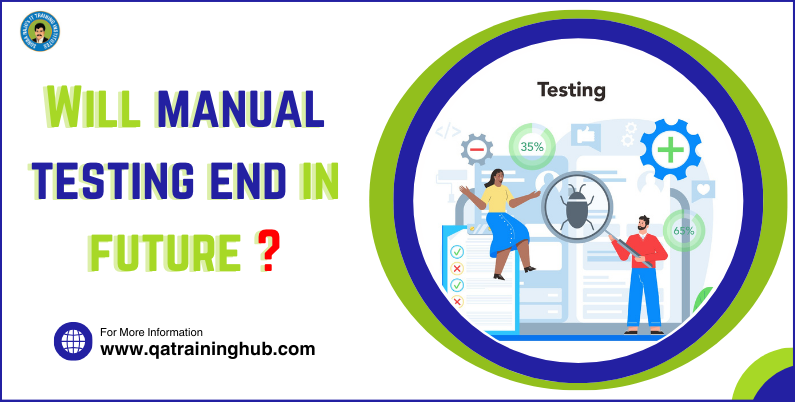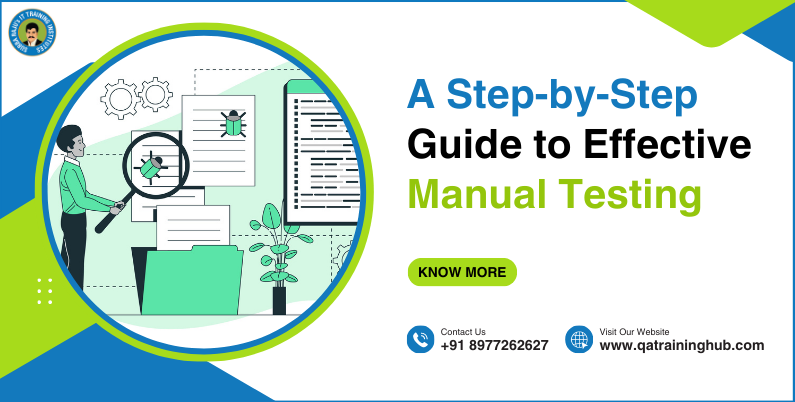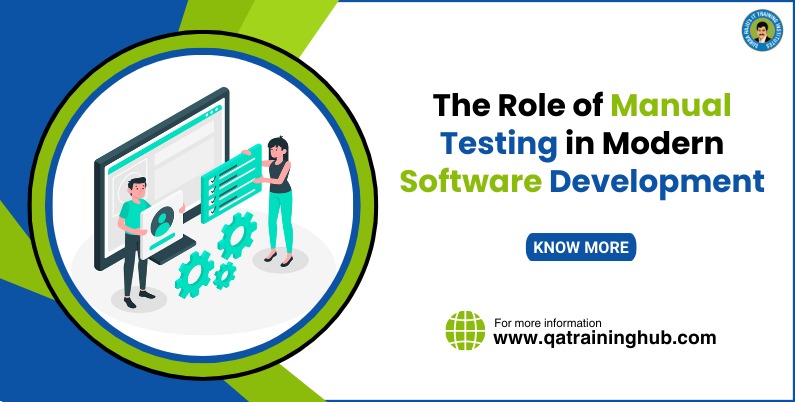
The Future of Manual Testing: Will It End?
In the Software development, the role of manual testing has played a crucial role in ensuring the quality and performance of applications. However, with the rise of automation and advancements in technology, there arises a question: will manual testing end in future? This article will examine the future of manual testing, exploring the current trends, challenges, and potential outcomes.
Understanding Manual Testing:
Manual testing involves human testers executing test cases without the use of automation tools. It depends on the tester’s intuition, creativity, and expertise in the field to detect defects and ensure that the software aligns with user expectations. While manual testing has been a fundamental aspect of quality assurance for many years, its limitations have become increasingly evident in recent times.
Challenges Facing Manual Testing:
Time-Consuming: Manual testing can require a lot of effort and time, especially for large-scale projects with complex functionalities. Testers must repeat the same test cases several times,resulting in inefficiencies and slowing down the software development process.
Limited Coverage: Human testers may overlook certain edge cases or situations, which could create gaps in test coverage. This can result in undetected bugs to enter the final product, potentially causing problems for users.
Scalability Issues: As software systems become more complex and expansive, manual testing becomes increasingly impractical. It’s difficult for human testers to keep up with the pace of development and ensure thorough testing across all components of the application.
Cost-Intensive: Hiring and training manual testers can be costly for organizations, particularly when compared to the comparatively lower initial investment needed for test automation.
The Rise of Test Automation:
To address the difficulties associated with manual testing, organizations are increasingly adopting test automation to streamline their quality assurance procedures. Test automation utilizes dedicated software tools to carry out test cases, verify outcomes, and identify defects automatically. Automation presents numerous benefits over manual testing, such as:
Efficiency: Automated tests can be completed much faster than manual tests, allowing organizations to speed up their release cycles and improve time-to-market.
Consistency: Automated tests carry out the same procedures and verifications consistently, reducing the chances of human error and ensuring dependable test results.
Scalability: Test automation is more scalable than manual testing, making it suitable for large and complex software projects.
Reusability: Automated test scripts can be reused across various test cycles and environments, saving time and effort in the long term.
However, despite these advantages, test automation also has its limitations. Not all tests are suitable for automation, and maintaining automated test suites requires continuous effort and expertise. Moreover, some aspects of testing, such as usability testing and exploratory testing, still heavily depend on human judgment and intuition.
The Future of Manual Testing:
Although the use of AI and automation is increasing in software testing, it’s unlikely that manual testing will completely disappear in the near future. Manual testing provides specific benefits and remains crucial in numerous situations:
Exploratory Testing:Human testers are particularly effective at exploratory testing, where testers explore the application in an ad-hoc manner, trying to discover unexpected behavior or usability issues that automated tests might overlook.
User Experience (UX) Testing: Assessing the user experience, which involves aspects such as visual appeal, ease of use, and intuitiveness, often requires human judgment and subjective evaluation that isn’t easily automated.
Edge Cases and Complex Scenarios: Manual testing is frequently essential for examining conplex scenarios and edge cases that may be difficult to automate or require human creativity and intuition to uncover.
New Features and User Stories: Manual testing is commonly used extensively during the development of new features or user stories, as it enables quick feedback and validation before investing in automation efforts.
Accessibility Testing: Ensuring software accessibility for users with disabilities requires manual testing by individuals who understand accessibility guidelines, capable of evaluating the user experience from that standpoint.
Conclusion:
In conclusion, will manual testing end in future in the face of automation and technological advancements, it is unlikely to disappear completely. Instead, manual testing will evolve to coexist with automation, providing unique insights and value in specific testing scenarios. By adopting hybrid approaches, emphasizing exploratory testing, and integrating with DevOps practices, organizations can harness the strengths of both manual and automated testing to deliver high-quality software products that meet user expectations.
At QA TrainingHub, we understand the changing nature of software testing and are committed to preparing our students for the challenges and opportunities that lie ahead. Our comprehensive training programs cover both manual and automated testing techniques, equipping learners with the skills and knowledge needed to succeed in today’s dynamic QA environment.
As the future of manual testing unfolds, QA TrainingHub will remain your trusted partner in navigating this continuously changing environment. Join us and learn how will manual testing end in future and let’s shape the future of quality assurance together.







